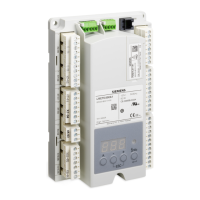LME Series Technical Instructions
Document No. LME-1000
SCC Inc. Page 13 Appendix A
Two Flame Detectors
Introduction
When using a piloted line burner with a flame propagating in excess of three feet, two flame
detectors are required by both NFPA 86 and CSA B149.3. These flame detectors are:
1. Ignition flame detector – used to sense the pilot burner flame at the source of ignition
2. Propagation flame detector – used to sense the main burner flame at the farthest point
from the source of ignition
The following procedure and wiring diagrams describe how to connect two flame detectors to a
single LME7 burner control and how to use a timer relay to switch between the two flame
detectors.
Procedure and Notes
1. An on-delay timer relay is required for this application. Set the timer relay for a time
that is shorter than parameter 231 (pilot and main overlap time), but longer than the
time it takes to light the main burner.
2. Wire the timer relay and flame detectors according to the appropriate wiring diagram
on the following pages.
3. When main valve terminal X7-04.4 is energized in phase 50, the timer relay will
energize. Once the preset time has elapsed, the normally open relay contact(s) will
close and the normally closed relay contact(s) will open. This will cause the switchover
from the ignition flame detector to the propagation flame detector.
4. When using two flame scanners on the LME75, one flame scanner must be a QRA75.A17
and the other flame scanner must be a 5002-01… series scanner from Preferred
Instruments.
5. On the following wiring diagrams, the ignition flame detector and propagation flame
detector can be switched if desired. For example, if the diagram shows a flame rod as
the ignition flame detector and a flame scanner as the propagation flame detector, it is
also okay to use the flame rod as the propagation flame detector and a flame scanner as
the ignition flame detector. To do so, simply wire the normally closed and normally
open timer relay contacts reverse of what the wiring diagram shows.

